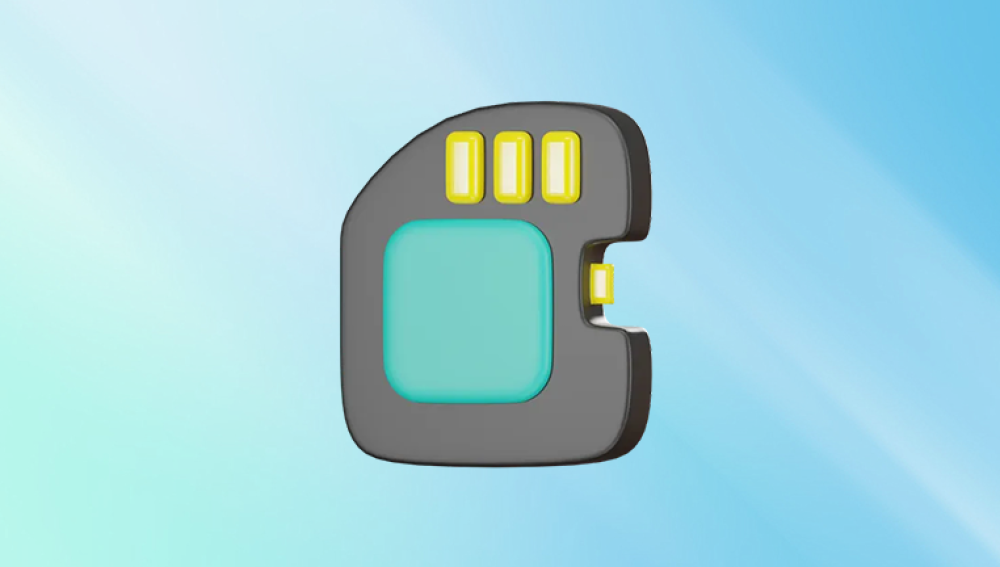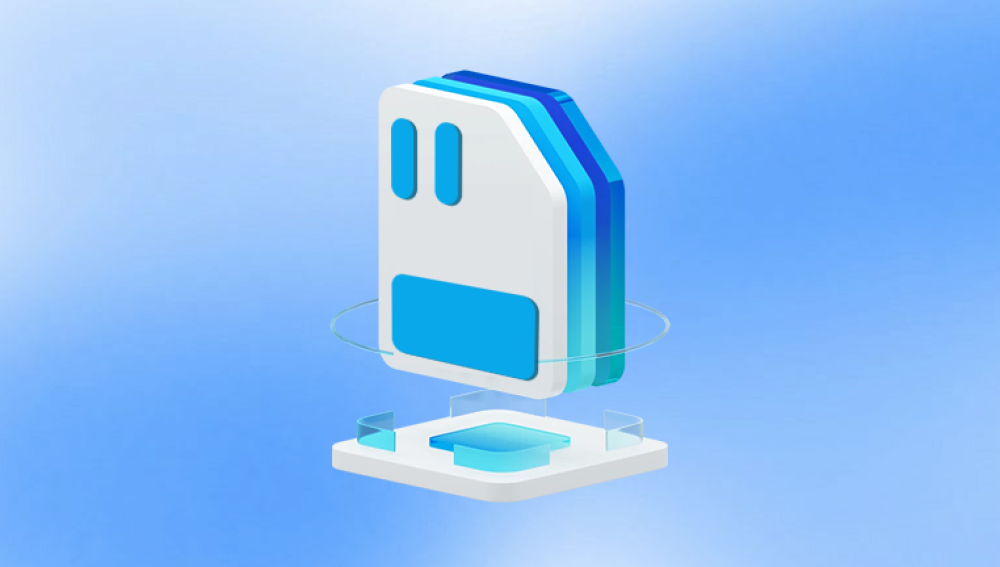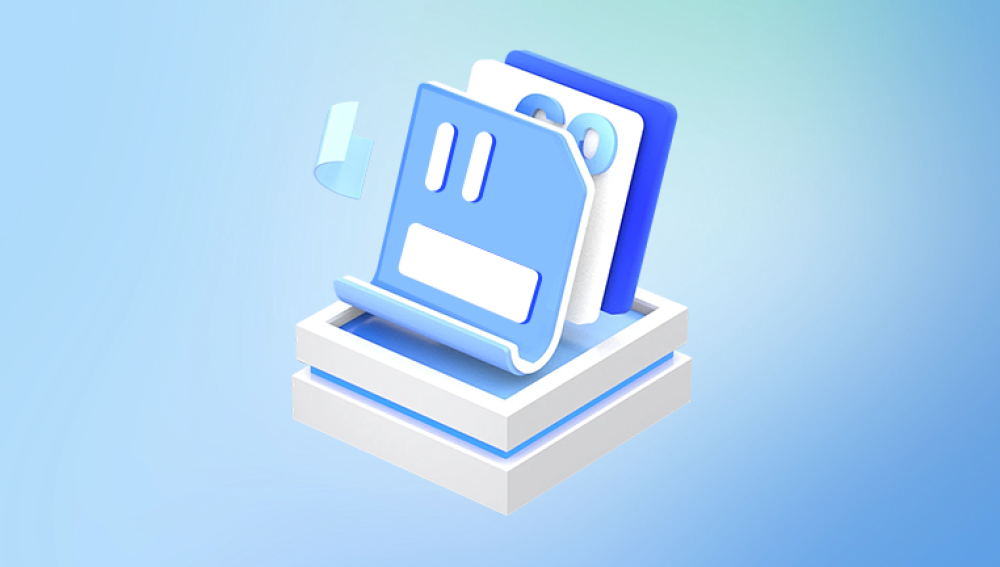They are compact, portable, and capable of holding gigabytes sometimes terabytes of data. From DSLR cameras and smartphones to drones and trail cameras, SD cards are everywhere. But despite their versatility and convenience, SD cards are also vulnerable to damage.
Whether it’s physical wear and tear, logical corruption, or improper ejection, a damaged SD card can be a nightmare especially when it contains irreplaceable memories or important documents. Many users panic when their devices suddenly report errors like “SD card not recognized,” “Card is damaged,” or “Format card before use.” Fortunately, in many cases, damaged SD cards are not entirely beyond repair.
Chapter 1: SD Card Damage
Before jumping into recovery, it’s essential to understand what kind of damage you're dealing with. SD card damage can be broadly classified into two types:

1. Physical Damage
This involves tangible harm to the card, such as:
Cracked casing
Broken connectors
Water or heat exposure
Bent or warped structure
Physical damage can severely affect your ability to access data and may require professional intervention.
2. Logical/Software Damage
This type includes:
File system corruption
Bad sectors
Accidental formatting
Malware infection
Improper ejection
Logical damage is often repairable using recovery software or built-in operating system tools.
Knowing the kind of damage helps you choose the right recovery method and tools. Begin by examining your SD card closely and noting any visible defects. If the card looks intact, the problem may be software-related and recoverable at home.
Chapter 2: Signs of a Damaged SD Card
Here are some common signs indicating your SD card may be damaged:
Device can’t read the card
Files and folders have disappeared
“Read/Write error” messages
“SD card must be formatted” prompt
Computer or phone freezes when card is inserted
Files appear as strange characters or are corrupted
Recognizing these symptoms early allows you to stop using the card immediately, increasing the chances of a successful recovery.
Chapter 3: Immediate First Steps
The moment you suspect damage, stop using the SD card. Any further use, including attempts to save new files, format, or fix errors without a plan, can make the situation worse by overwriting recoverable data.
Basic Safety Steps
Eject the card safely using your device’s built-in options.
Insert it into another device to rule out a reader or device error.
Avoid formatting even if prompted.
Do not cut, remove, or open the card physically.
Store the card in a dry, cool place until you're ready for the recovery process.
Chapter 4: Tools You’ll Need
To proceed with recovery, you’ll need the following:
A computer (Windows/macOS/Linux)
A card reader
SD card data recovery software
Optional: a secondary SD card for testing
Optional: professional data recovery services (for severe damage)
Chapter 5: Software Recovery for Logically Damaged SD Cards
Drecov Data Recovery
SD cards are essential for storing important photos, videos, and files across smartphones, cameras, drones, and other devices. But when an SD card becomes corrupted, unreadable, or accidentally formatted, your valuable data can seem lost forever. That’s where Drecov Data Recovery steps in to help.
Drecov Data Recovery is a reliable and user-friendly tool designed to recover lost or deleted files from all types of SD cards, including microSD, SDHC, and SDXC. Whether your SD card was damaged, formatted, or simply stopped working, Panda’s smart scanning technology digs deep to retrieve your data safely and efficiently.
The recovery process is simple: just insert your SD card into your computer, launch Drecov Data Recovery, and select the card from the list of drives. The software performs a thorough scan and displays a preview of the recoverable files. You can easily choose which files to restore photos, videos, documents, and more without the risk of overwriting anything.
Chapter 6: Using System Utilities for Recovery
Operating systems have built-in tools that can help repair minor SD card corruption.
For Windows Users
A. Use CHKDSK
Open Command Prompt as Administrator.
Type:
chkdsk X: /f
(Replace X with your SD card’s drive letter.)
Press Enter.
This checks for file system errors and attempts to fix them.
B. Disk Management
Right-click Start > Disk Management.
Check if the SD card appears.
If it shows as unallocated or raw, consider recovery before reformatting.
For macOS Users
A. Use Disk Utility
Open Disk Utility from Applications > Utilities.
Select your SD card from the sidebar.
Click First Aid and run it.
This will attempt to repair any logical issues on the card.
Chapter 7: Recovering Data from Formatted SD Cards
If you’ve accidentally formatted the card, data is often still retrievable as formatting only erases the directory structure, not the actual files.
Steps:
Stop using the card immediately.
Use recovery software like Panda Assistant or PhotoRec.
Run a full scan targeting image, video, or document file types.
Recover to a separate storage location.
Success depends on whether any new data was written post-formatting.
Chapter 8: Recovery for Physically Damaged SD Cards
If your SD card has visible cracks, broken pins, or water damage, software solutions likely won’t help.
Symptoms of Physical Damage
Not detected in any device or computer
Heats up abnormally
Shows 0 bytes in properties
Completely unreadable
What Not to Do
Do not microwave, freeze, or physically force the card.
Do not open the card casing it risks total loss.
Do not run DIY soldering unless you are a certified electronics technician.
What to Do
Seek a professional recovery lab.
Look for cleanroom-certified facilities.
Ask about “no data, no charge” policies.
Professional data recovery can cost anywhere from $100 to $1000+, depending on the damage.
Chapter 9: Recovering Images from Camera-Specific Damage
Certain cameras, such as GoPros and DSLRs, may write data in proprietary ways. If you pulled the SD card mid-write or the camera crashed, you may see errors like “Card not usable” or “Cannot display image.”
Solutions
Use tools like Stellar Photo Recovery that support camera RAW formats (NEF, CR2. ARW).
Recover with a program that supports fragmented file systems.
Use camera recovery mode, if available, to attempt in-device repair.
Chapter 10: File Types You Can Recover
Most recovery tools can restore a wide range of files, including:
Photos – JPG, PNG, GIF, BMP, TIFF, RAW (NEF, CR2. ARW, etc.)
Videos – MP4. AVI, MOV, MTS, 3GP
Documents – PDF, DOCX, XLSX, TXT
Audio – MP3. WAV, AAC
Recovery success varies depending on how long ago the data was lost and whether the card has been reused since.
Chapter 11: Preventing Future SD Card Damage
Once you recover your data, take steps to avoid another catastrophe.
Tips to Protect Your SD Card
Eject safely – Always remove cards using system options.
Avoid full storage – Don’t max out the card capacity.
Format in-device – Let your camera or phone handle formatting.
Don’t use the same card across multiple devices – Increases the risk of file system corruption.
Store in protective cases – Prevents physical damage.
Keep away from magnets, water, and heat.
Back up data frequently – Use cloud or external drives.
Chapter 12: When to Give Up
Despite your best efforts, not all SD card recoveries succeed. If:
The card cannot be detected in any reader
No files are found even with deep scans
Physical damage is extensive
Recovery labs return unreadable chip data
…it may be time to accept the loss. In these cases, focus on prevention moving forward.
Recovering data from a damaged SD card can be stressful, but it’s not always hopeless. With the right approach, tools, and timing, you can often restore lost files especially in cases of logical or formatting errors.
The key is acting quickly and avoiding mistakes that could make recovery harder, like continuing to use the card or attempting risky DIY fixes. Use reliable recovery software like Panda Assistant or consult professionals when the situation demands.




